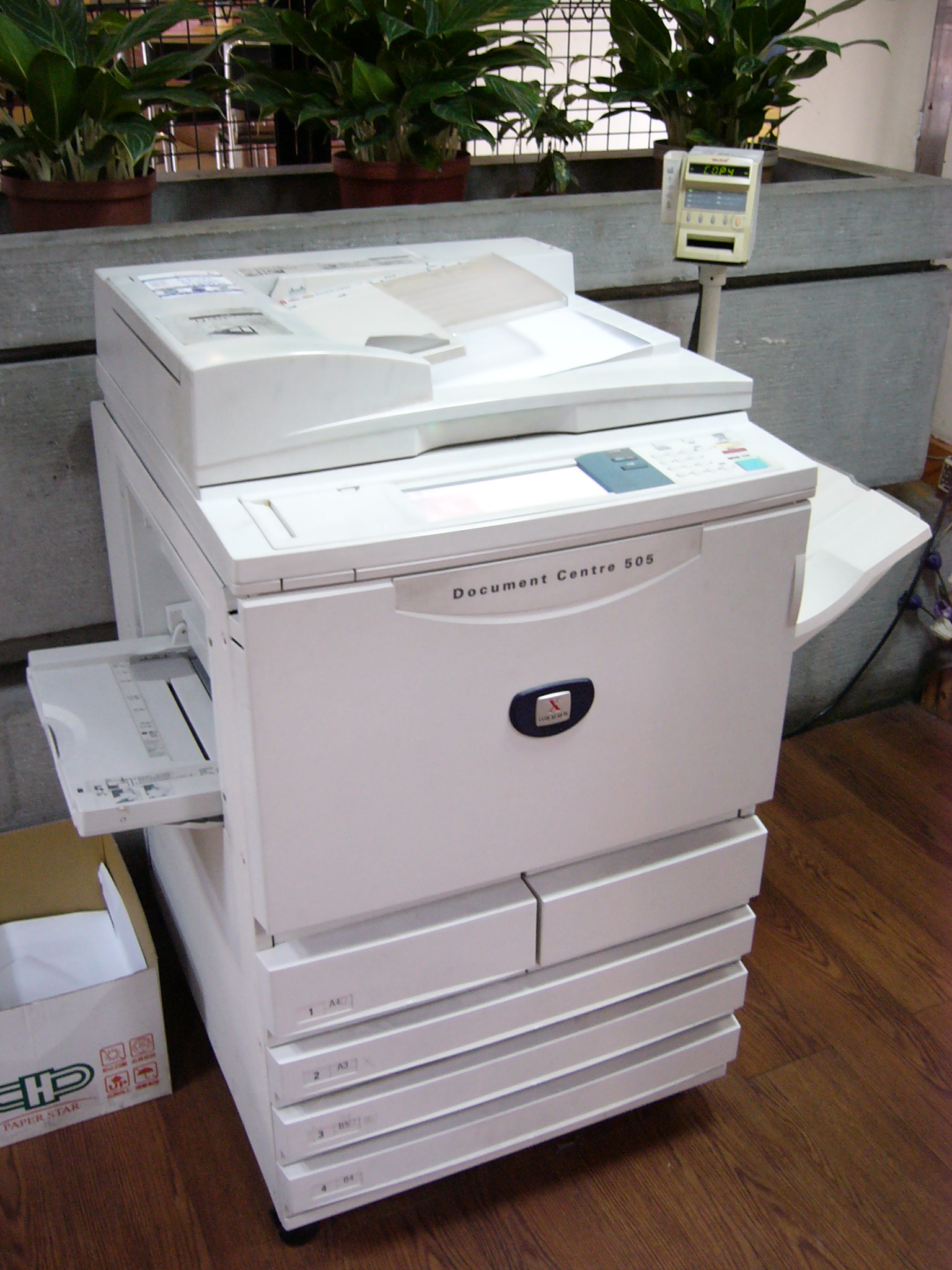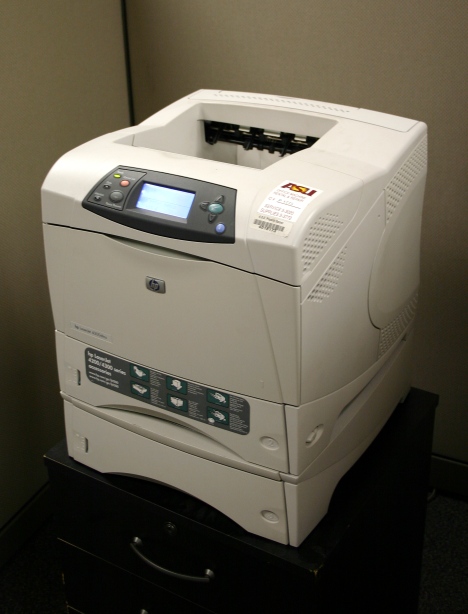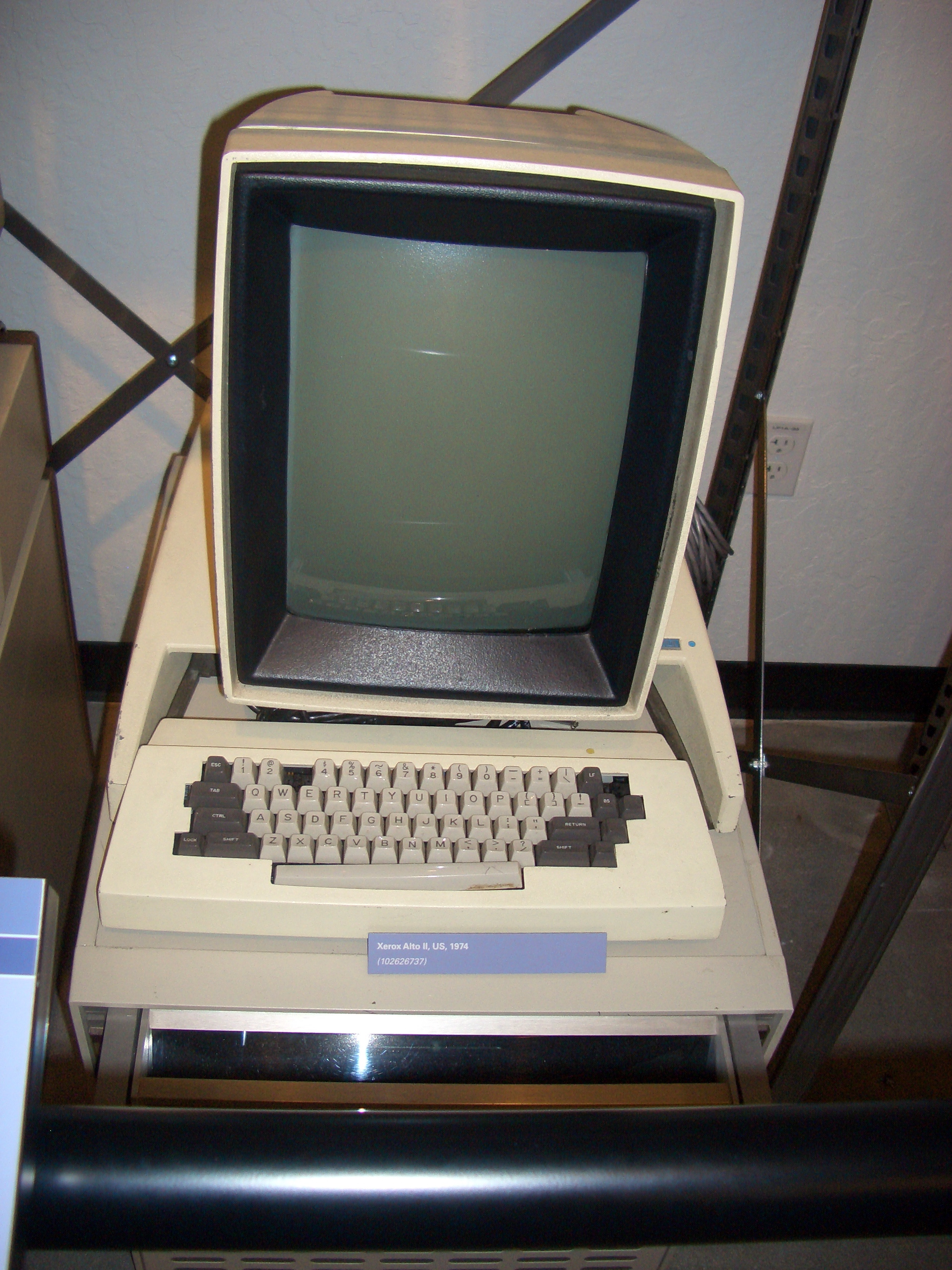|
Xerography
Xerography is a dry photocopying technique. Originally called electrophotography, it was renamed xerography—from the roots el, ξηρός, label=none ''xeros'', meaning "dry" and -γραφία ''-graphia'', meaning "writing"—to emphasize that unlike reproduction techniques then in use such as cyanotype, the process of xerography used no liquid chemicals. History Xerography was invented by American physicist Chester Carlson, based significantly on contributions by Hungarian physicist Pál Selényi. Carlson applied for and was awarded on October 6, 1942. Carlson's innovation combined electrostatic printing with photography, unlike the dry electrostatic printing process invented by Georg Christoph Lichtenberg in 1778. Carlson's original process was cumbersome, requiring several manual processing steps with flat plates. In 1946, Carlson signed an agreement with Haloid Photographic Company to develop it as a commercial product. Before that year, Carlson had proposed his ... [...More Info...] [...Related Items...] OR: [Wikipedia] [Google] [Baidu] |
Chester Carlson
Chester Floyd Carlson (February 8, 1906 – September 19, 1968) was an American physicist, inventor, and patent attorney born in Seattle, Washington. Carlson invented electrophotography, the process used by millions of photocopiers worldwide. Carlson's invention produced a dry copy, in contrast to the wet copies then produced by the Photostat process. Carlson's process was renamed xerography, a term that means "dry writing." Early life Carlson's father, Olaf Adolph Carlson, had little formal education, but was described as "brilliant" by a relative. Carlson wrote of his mother, Ellen, that she "was looked up to by her sisters as one of the wisest." When Carlson was an infant, his father contracted tuberculosis, and also later suffered from arthritis of the spine (a common, age-related disease). When Olaf moved the family to Mexico for a seven-month period in 1910, in hopes of gaining riches through what Carlson described as "a crazy American land colonization scheme," Ellen ... [...More Info...] [...Related Items...] OR: [Wikipedia] [Google] [Baidu] |
Photocopier
A photocopier (also called copier or copy machine, and formerly Xerox machine, the generic trademark) is a machine that makes copies of documents and other visual images onto paper or plastic film quickly and cheaply. Most modern photocopiers use a technology called ''xerography'', a dry process that uses electrostatic charges on a light-sensitive photoreceptor to first attract and then transfer toner particles (a powder) onto paper in the form of an image. The toner is then fused onto the paper using heat, pressure, or a combination of both. Copiers can also use other technologies, such as inkjet, but xerography is standard for office copying. Commercial xerographic office photocopying was introduced by Xerox in 1959, and it gradually replaced copies made by Verifax, Photostat, carbon paper, mimeograph machines, and other duplicating machines. Photocopying is widely used in the business, education, and government sectors. While there have been predictions that photocopiers ... [...More Info...] [...Related Items...] OR: [Wikipedia] [Google] [Baidu] |
Laser Printer
Laser printing is an electrostatic digital printing process. It produces high-quality text and graphics (and moderate-quality photographs) by repeatedly passing a laser beam back and forth over a negatively-charged cylinder called a "drum" to define a differentially-charged image. The drum then selectively collects electrically-charged powdered ink (toner), and transfers the image to paper, which is then heated to permanently fuse the text, imagery, or both, to the paper. As with digital photocopiers, laser printers employ a xerographic printing process. Laser printing differs from traditional xerography as implemented in analog photocopiers in that in the latter, the image is formed by reflecting light off an existing document onto the exposed drum. Invented at Xerox PARC in the 1970s, laser printers were introduced for the office and then home markets in subsequent years by IBM, Canon, Xerox, Apple, Hewlett-Packard and many others. Over the decades, quality and speed have in ... [...More Info...] [...Related Items...] OR: [Wikipedia] [Google] [Baidu] |
Photocopier
A photocopier (also called copier or copy machine, and formerly Xerox machine, the generic trademark) is a machine that makes copies of documents and other visual images onto paper or plastic film quickly and cheaply. Most modern photocopiers use a technology called ''xerography'', a dry process that uses electrostatic charges on a light-sensitive photoreceptor to first attract and then transfer toner particles (a powder) onto paper in the form of an image. The toner is then fused onto the paper using heat, pressure, or a combination of both. Copiers can also use other technologies, such as inkjet, but xerography is standard for office copying. Commercial xerographic office photocopying was introduced by Xerox in 1959, and it gradually replaced copies made by Verifax, Photostat, carbon paper, mimeograph machines, and other duplicating machines. Photocopying is widely used in the business, education, and government sectors. While there have been predictions that photocopiers ... [...More Info...] [...Related Items...] OR: [Wikipedia] [Google] [Baidu] |
Laser Printer
Laser printing is an electrostatic digital printing process. It produces high-quality text and graphics (and moderate-quality photographs) by repeatedly passing a laser beam back and forth over a negatively-charged cylinder called a "drum" to define a differentially-charged image. The drum then selectively collects electrically-charged powdered ink (toner), and transfers the image to paper, which is then heated to permanently fuse the text, imagery, or both, to the paper. As with digital photocopiers, laser printers employ a xerographic printing process. Laser printing differs from traditional xerography as implemented in analog photocopiers in that in the latter, the image is formed by reflecting light off an existing document onto the exposed drum. Invented at Xerox PARC in the 1970s, laser printers were introduced for the office and then home markets in subsequent years by IBM, Canon, Xerox, Apple, Hewlett-Packard and many others. Over the decades, quality and speed have in ... [...More Info...] [...Related Items...] OR: [Wikipedia] [Google] [Baidu] |
Photocopying
A photocopier (also called copier or copy machine, and formerly Xerox machine, the generic trademark) is a machine that makes copies of documents and other visual images onto paper or plastic film quickly and cheaply. Most modern photocopiers use a technology called ''xerography'', a dry process that uses electrostatic charges on a light-sensitive photoreceptor to first attract and then transfer toner particles (a powder) onto paper in the form of an image. The toner is then fused onto the paper using heat, pressure, or a combination of both. Copiers can also use other technologies, such as inkjet, but xerography is standard for office copying. Commercial xerographic office photocopying was introduced by Xerox in 1959, and it gradually replaced copies made by Verifax, Photostat, carbon paper, mimeograph machines, and other duplicating machines. Photocopying is widely used in the business, education, and government sectors. While there have been predictions that photocopiers ... [...More Info...] [...Related Items...] OR: [Wikipedia] [Google] [Baidu] |
Xerox 914
The Xerox 914 was the first successful commercial plain paper copier. Introduced in 1959 by the Haloid/Xerox company. It revolutionized the document-copying industry. The culmination of inventor Chester Carlson's work on the xerographic process, the 914 was fast and economical. The copier was introduced to the public on September 16, 1959, in a demonstration at the Sherry-Netherland Hotel in New York, shown on live television. Background Xerography, a process of producing images using electricity, was invented in 1938 by physicist-lawyer Chester Floyd "Chet" Carlson (1906–1968), and an engineering friend, Otto Kornei. Carlson entered into a research agreement with the Battelle Memorial Institute in 1944, when he and Kornei produced the first operable copy machine. He sold his rights in 1947 to the Haloid Company, a wet-chemical photopaper manufacturer, founded in 1906 in Rochester, New York. Haloid introduced the first commercial xerographic copier, the Xerox Model A, in 1 ... [...More Info...] [...Related Items...] OR: [Wikipedia] [Google] [Baidu] |
Xerox
Xerox Holdings Corporation (; also known simply as Xerox) is an American corporation that sells print and electronic document, digital document products and services in more than 160 countries. Xerox is headquartered in Norwalk, Connecticut (having moved from Stamford, Connecticut, in October 2007), though it is incorporated in New York (state), New York with its largest population of employees based around Rochester, New York, the area in which the company was founded. The company purchased Affiliated Computer Services for $6.4 billion in early 2010. As a large developed company, it is consistently placed in the list of Fortune 500 companies. On December 31, 2016, Xerox separated its business process service operations, essentially those operations acquired with the purchase of Affiliated Computer Services, into a new publicly traded company, Conduent. Xerox focuses on its document technology and document outsourcing business, and traded on the NYSE from 1961 to 2021, and the N ... [...More Info...] [...Related Items...] OR: [Wikipedia] [Google] [Baidu] |
Xerox Corporation
Xerox Holdings Corporation (; also known simply as Xerox) is an American corporation that sells print and digital document products and services in more than 160 countries. Xerox is headquartered in Norwalk, Connecticut (having moved from Stamford, Connecticut, in October 2007), though it is incorporated in New York with its largest population of employees based around Rochester, New York, the area in which the company was founded. The company purchased Affiliated Computer Services for $6.4 billion in early 2010. As a large developed company, it is consistently placed in the list of Fortune 500 companies. On December 31, 2016, Xerox separated its business process service operations, essentially those operations acquired with the purchase of Affiliated Computer Services, into a new publicly traded company, Conduent. Xerox focuses on its document technology and document outsourcing business, and traded on the NYSE from 1961 to 2021, and the Nasdaq since 2021. Researchers at Xer ... [...More Info...] [...Related Items...] OR: [Wikipedia] [Google] [Baidu] |
Amorphous Solid
In condensed matter physics and materials science, an amorphous solid (or non-crystalline solid, glassy solid) is a solid that lacks the long-range order that is characteristic of a crystal. Etymology The term comes from the Greek ''a'' ("without"), and ''morphé'' ("shape, form"). In some older articles and books, the term was used synonymously with glass. Today, "glassy solid" or "amorphous solid" is considered the overarching concept. Polymers are often amorphous. Structure Amorphous materials have an internal structure comprising interconnected structural blocks that can be similar to the basic structural units found in the corresponding crystalline phase of the same compound. Unlike crystalline materials, however, no long-range order exists. Localized order in amorphous materials can be categorized as short or medium range order. By convention, short range order extends only to the nearest neighbor shell, typically only 1-2 atomic spacings. Medium range order is then def ... [...More Info...] [...Related Items...] OR: [Wikipedia] [Google] [Baidu] |
Doping (semiconductor)
In semiconductor production, doping is the intentional introduction of impurities into an intrinsic semiconductor for the purpose of modulating its electrical, optical and structural properties. The doped material is referred to as an extrinsic semiconductor. Small numbers of dopant atoms can change the ability of a semiconductor to conduct electricity. When on the order of one dopant atom is added per 100 million atoms, the doping is said to be ''low'' or ''light''. When many more dopant atoms are added, on the order of one per ten thousand atoms, the doping is referred to as ''high'' or ''heavy''. This is often shown as ''n+'' for n-type doping or ''p+'' for p-type doping. (''See the article on semiconductors for a more detailed description of the doping mechanism.'') A semiconductor doped to such high levels that it acts more like a conductor than a semiconductor is referred to as a degenerate semiconductor. A semiconductor can be considered i-type semiconductor if it has ... [...More Info...] [...Related Items...] OR: [Wikipedia] [Google] [Baidu] |





